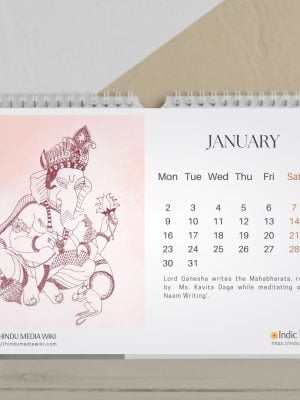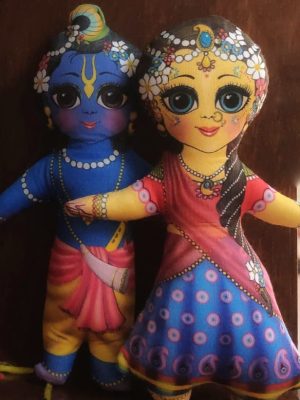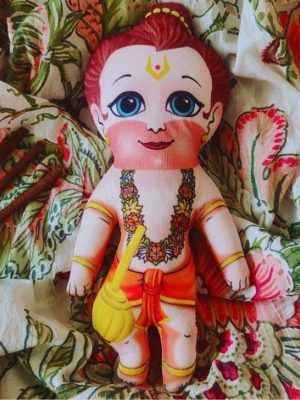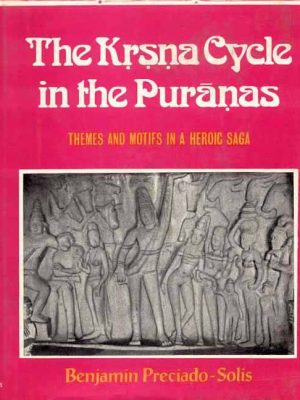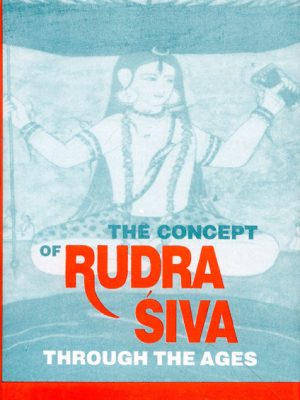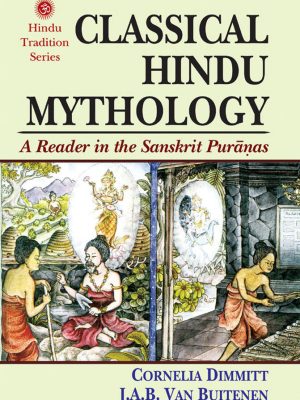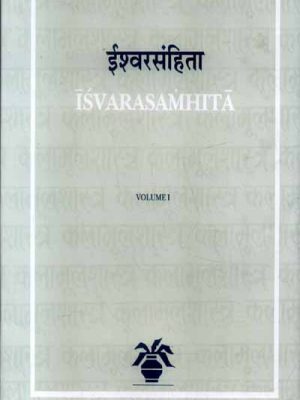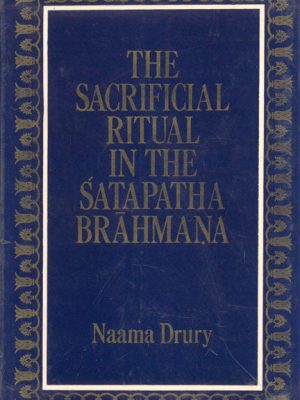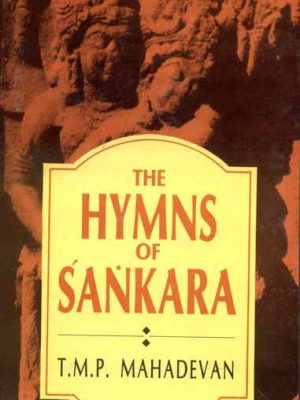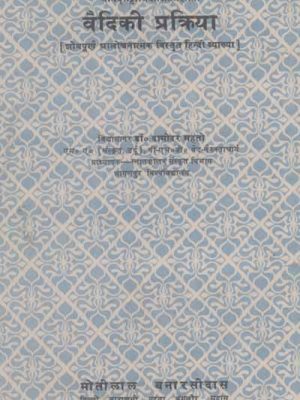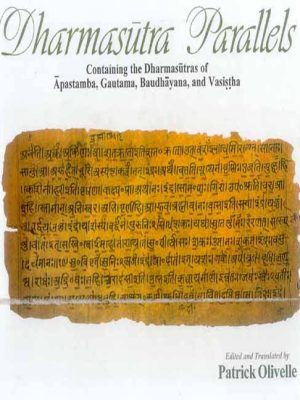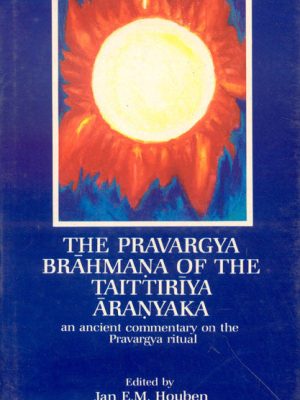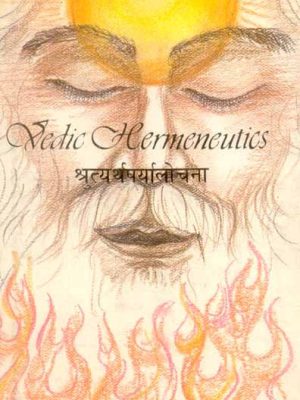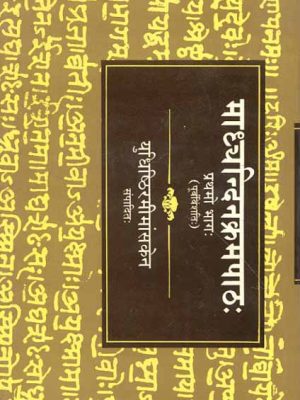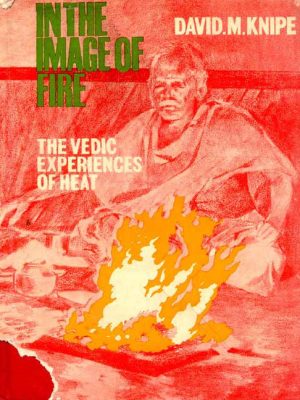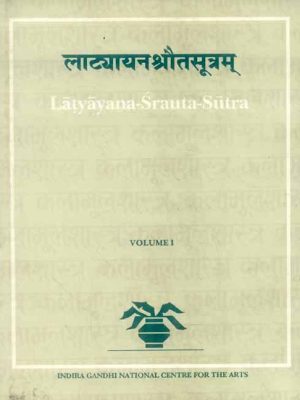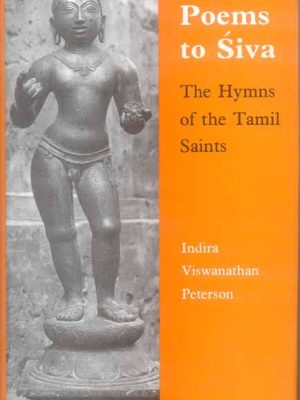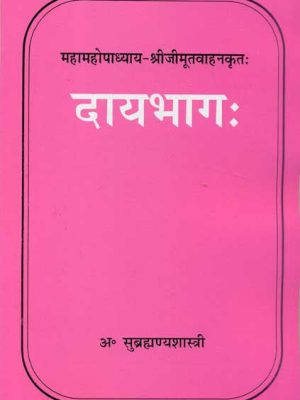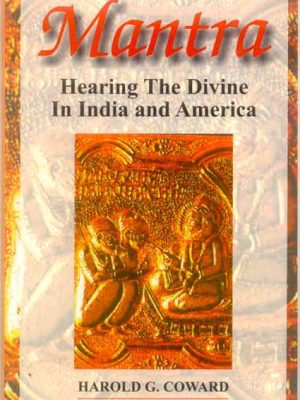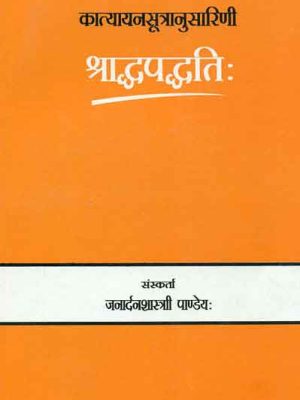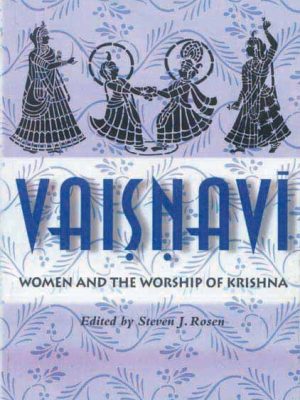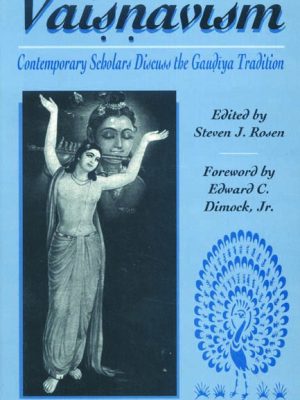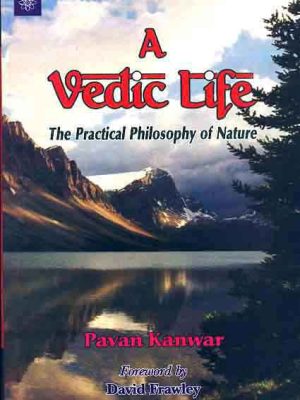Shop
Best Seller Items
-
2023 Hindu Deity Desk Calendar
“Raam Raam for every day of the year! Our 2023 calendar featuring Hindu deities is here to bring peace and blessings to your home. #Hinduism #calendar #2023”
[ABOUT THE THEME ]: 2023 Desk Calendar with Sketches of Hindu Deity for each month. All the artwork is created using Raam Naam Writing. Would look up great on your desk. And a gift that can be given.
[MATERIAL]: 12 months desk calendar format (Jan 2023 – Dec 2023) | Metal Wiro
[PAPER QUALITY]: 350 GSM laminated paper with matte finish & 8.5” x 5.5″ (artwork size) | Imported paper provides a shiny lustrous surface and protects from moisture and water splashes
[ABOUT THE CALENDAR]: Calendar designed to brighten your workspace, with 12 months of illustrated artwork. A self-inspiring themed calendar, infused with botanical illustrations, is a great addition to your desk. A perfect companion for your 2023. The pages are wire-bound in a glistening golden color and a stand makes it easy to prop up at work or at home. 12 months desk calendar format
[WHY BUY OUR CALENDAR]: Powerful illustrations to help you stay positive and motivated | Sleek and compact calendar to add pop of color to your desk | Unique and original illustration
[GREAT CHOICE FOR GIFTING]: Our calendars are unique, thoughtful, original, cute, and pretty. Makes an ideal choice for gifting.
₹299.00₹350.002023 Hindu Deity Desk Calendar
₹299.00₹350.00 -
2022 Dharmic Desk Calendar with Sanskrit quotes
[ABOUT THE THEME ]: 2022 Desk Calendar with unique Sanskrit quotes with meaning for each month. With some beautiful some rare some known temple images in the background. Would look up great on your desk. And a gift that can be given.
[MATERIAL]: 12 months desk calendar format (Jan 2022 – Dec 2022) | Metal Wiro
[PAPER QUALITY]: 350 GSM laminated paper with matte finish & 6” x 7.5″ (artwork size) | Imported paper providing a shiny lustrous surface and protects from moisture and water splashes
[ABOUT THE CALENDAR]: Calendar designed to brighten your workspace, with 12 months of illustrated artworks. A self-inspiring themed calendar, infused with botanical illustrations, is a great addition to your desk. A perfect companion for your 2022. The pages are wiro-bound in a glistening golden color and a stand makes it easy to prop up at work or at home. 12 months desk calendar format
[WHY BUY OUR CALENDAR]: Powerful illustrations to help you stay positive and motivated | Sleek and compact calendar to add pop of color to your desk | Unique and original illustration
[GREAT CHOICE FOR GIFTING]: Our calendars are unique, thoughtful, original, cute and pretty. Makes an ideal choice for gifting.₹220.00₹350.002022 Dharmic Desk Calendar with Sanskrit quotes
₹220.00₹350.00 -
Jeerola Pachak Masala Pouch Pack of 4: JalJeera Powder
This can be used with various Foods & Drinks listed below. Soda, Limbu Sarbat, Butter Milk, Curd, Water Melon, Cold Tomato, Green Salad, Fruit Dish, Veg. Sandwich, Wafers, Namkin, All type of Juice and etc…
Jeerola JalJeera Powder
This JalJeera Powder is All in one Masala is one of the best masala products in Gujarat. One Packet comes in the size of 100 Grams and can be stored easily throughout the year in all kinds of weather.
Did You know?
JalJeera Powder from Jeerola Masala is an iconic product of Upleta town in Rajkot District of Gujarat. It is produced by VK Foods and is also famous for making different sharbat and another drinking masalaInsider Story:
V.K. Foods is committed to the fulfillment of our Vision through a powerful focus on Customers, People, and Innovation. VK FOOD will create unique, superior, and economically competitive products through world-class integration of masala/spices expertise, consumer insights, and brand understanding.How to use
Add a teaspoon of the amount in Soda, Limbu Sarbat, Butter Milk, Curd, Water Melon, Cold Tomato, Green Salad, Fruit Dish, Veg. Sandwich, Wafers, Namkin, All types of Juice, and any of your favorite drinks.
₹229.00₹250.00Jeerola Pachak Masala Pouch Pack of 4: JalJeera Powder
₹229.00₹250.00 -
Faba Honey 100% Organic Honey with Discount: Fresh Mixed Flora Honey
Available in 7 different flavors
What is the healthiest type of honey? What is the difference between raw honey and regular honey?
Is Organic Honey worth it?
Sweeten your favorite beverage, smoothie, breakfast cereal and dahi with honey. Use it in cooking sauces, grill marinades, salad dressings and dips. A teaspoon of honey mixed with fresh tulsi leaf and ginger juice is a soothing remedy for sore throats. Crystallisation in honey is a natural phenomenon dependant on the balance of natural sugars in it. Honey can be decrystallised by placing the jar in a bowl of warm water-do not heat the honey.
You can checkout Jamun Honey here: https://indicbrands.com/product/faba-honey-100-organic-honey-jamun-honey/
Follow us for more updates on https://twitter.com/indicbrands
Manufactured & Packaged By Faba Honey, Sona Enterprise Rampur Civil Lines Area, Rampu.
₹325.00 – ₹620.00Faba Honey 100% Organic Honey with Discount: Fresh Mixed Flora Honey
₹325.00 – ₹620.00 -
Tringrahi Soft Toys Individual Pairs Radha Krishna Dolls Sita Ram Dolls Shiva Parvati dolls
A beautiful pair of Radha Krishna Dolls, Sita Ram dolls, Shiva Parvati Dolls, Gaur Nitai Dolls, Krishna Balraam Dolls, Shiv Nandi Dolls and Narsimha Prahlad dolls ( also known as rag dolls ) made in high-quality material. Its a must for every child. Introduce your child to the beautiful world of Ancient and Spiritual India through our dolls. Tell your kids stories of Radha Krishna and let them enact it through their pair of dolls. It’s washable and non-toxic.
These are made by the vrajavasi’s of Sri Dham Vrindavana and we promote Cruelty-free and Fair Trade policy.
This product comes in total 6 different types of Pair, please select your pair before checkout 🙂
Did you know:
Handmade dolls in the Indian traditional way are one of the most important toys for the children of India. The proof of using such dolls in ancient time as toys date back to the Harappa site.Inside Story:
These dolls are suitable for Golu Dolls. These are made by the Vrajavasi’s of Sri Dham Vrindavana and we promote Cruelty-free and Fair Trade policy.Read more about our the creator’s journey: How Indian Dolls are loved by children around the world
Follow us on Twitter : Indic Brands on Twitter
₹499.00₹555.00 -
Latest Cute Bal hanuman Doll Toys by Tringrahi
New Addition of Cute Bal Hanuman dolls
A beautiful and cute Bal Hanuman dolls ( also known as rag dolls ) made in high-quality material. It’s a must for every child. Introduce your child to the beautiful world of Ancient and Spiritual India through our dolls.
Tell your kids stories of Hindu Gods like Hanuman and let them enact it through their pair of dolls. It’s washable and non-toxic.
These are made by the Vrajavasi’s of Sri Dham Vrindavana and we promote Cruelty-free and Fair Trade policy.
Checkout more dolls set by Tringrahi at this link
Follow Indic Brands and Tringrahi on Twitter.
₹340.00₹400.00Latest Cute Bal hanuman Doll Toys by Tringrahi
₹340.00₹400.00
-
The Krsna Cycle in the Puranas: Themes and Motifs in a Heroic Saga
The Krsna Cycle in the Puranas: Themes and Motifs in a Heroic Saga
Krsna is often regarded as one of the most beloved personalities in Indian literature and religion. The accounts of his life and the actions he performed continue to play an important role in the literary traditions of India right up to the present day. The primary ideas and recurrent images that can be seen throughout the Krsna mythology up to the 10th century are the focus of this book. In the first chapter, the antecedents of the figure of Krsna that may be found in the Vedas are investigated, as are some of the viewpoints that suggest that Krsna can be found in the hymns of the Vedas. An exhaustive survey is made of all of the archaeological and literary evidences, along with their interpretations and discussions by modern scholars, and the second chapter deals with the first historical evidence on Krsna up to the beginning of the Christian Era. This chapter covers the time period from the beginning of the Christian Era to the beginning of the Christian Era. In the third and fourth chapters, an examination of the motifs and themes found in the Krsna saga is presented using a folk-comparative methodology. Particular focus is placed on the parallels between the Krsna saga and the mythology surrounding Hercules. The last chapter provides an overview of the Krsna tales as they were shown in iconography up to the 10th century. In addition to this, there is a collection of images that depict the majority of the iconographical evidence that has been addressed; several of these photographs are being released for the first first time here.
Author
DR. BENJAMIN PRECIADO-SOLIS
₹1,000.00 -
Concept of Rudra-Siva Through the Ages
Concept of Rudra-Siva Through the Ages
The current book sheds fresh information on the progressive growth of the notion of Rudra-Siva in his animal, phallic, and human forms from the days of the Harappa Civilization. This development can be traced back to when the Harappa Civilization existed. It investigates how Siva, the composite Aryan-non-Aryan Divinity, was not only admitted but was ultimately crowned with an exalted position in the Brahmanical pantheon; how the bull, which was once identified with the deity, was regulated to the position of a vahana; how phallism was related to Saivism; and also how Siva, in his different forms, was represented in early Indian Art and the Art of Further India. Because of the breadth and depth of the author’s research, he has been able to fill an important need in the field, and his approach to the topic as a whole is unmatched. A comprehensive bibliography is included in this rigorous research on Siva that was conducted.
Author
MAHADEV CHAKRAVARTI
₹995.00 -
Classical Hindu Mythology: A Reader in the Sanskrit Puranas
Classical Hindu Mythology: A Reader in the Sanskrit Puranas
The Mahapuranas are the texts that best represent the conventional wisdom of Hindu mythology. This anthology includes recent translations of these stories, of which only a handful have ever been made accessible in English previously, and as a result, it makes available a substantial new section of Hindu mythology.
There are six different chapters in all in this book. Myths are told in “Origins” that are associated with creation, time, and space. The book “Seers, Kings, and Supernaturals” tells stories of rivers, trees, animals, demons, and mankind, most notably heroes and wise men. Krsna, Visnu, and Siva each have their own chapter to devote to debunking the many myths that circulate about them. The tales of the wives and lovers of the gods are told in the chapter titled “The Goddess.” The chapter also discusses Kali, the fierce goddess of conflict.
In the introductions that they have written, the editors have provided not only a historical context in which to analyse Hindu mythology but also a comprehensive examination of the sources upon which it is based. The several names that were originally given. The editors have included a comprehensive lexicon in order to make these names more understandable.
Author
Cornelia Dimmitt
₹995.00 -
Isvarasamhita (Set of 5 Vols.)
Isvarasamhita (Set of 5 Vols.)
Both Vaikhanasa and Pancaratra are very significant schools of ritual and philosophy that emerged as a direct result of Visnuism’s influence. The Isvarasamhita is an essential piece of literature for followers of the Pancaratra school of Visnuism.
Pancaratra is characterised by a more open and permissive approach, in contrast to Vaikhanasa, which has a character that is relatively archaic and relies more heavily on the Vedic tradition for its repertoire of mantras that are used in religious rites and ceremonies. Pancaratra’s repertoire of mantras can be found here. It has a text tradition that dates back around two thousand years, which has also been the primary basis for the Visistadvaita philosophy that was developed by Ramanuja (between the 11th and 12th centuries). Worship is performed in line with the instructions provided in one of the significant Pancaratra Samhitas at the vast majority of Vaisnava temples located in southern India, particularly in the state of Tamilnadu.
At the Narayanasvami temple in Melkote, a strict adherence to the Isvarasamhita can be seen throughout the daily puja ritual as well as during the many other types of religious celebrations that take place there. This is because the Isvarasamhita is an essential scripture of the Pancaratra School. Given that it is mentioned in Shri Yamunacarya’s Agama Pramanya, we may confidently place it somewhere between the 8th and 9th centuries at the very least. It is said to be a simpler and shorter version of the older sattvatasamhita of this school, which is the earliest available work of Pancaratra and is regarded as one of three ratnas, (Jewels), along with the Pauskara- and Jaya Samhitas. In other words, it is the simplest and shortest version of the older sattvatasamhita of this school. The Isvarasamhita contains a description of the rites, rituals, and ceremonies that take place (or ought to take place) at a Vaisnava temple. This description is spread out across 25 lengthy Adhyayas.
Palm leaf Because of its reputation for genuineness, the Narayanasvami temple in Melkote was the primary source for the Isvarasamhita manuscripts that were acquired. We have included attached to the text the gloss that was written by Alasimha Bhatta in the early 19th century. This gloss will be of assistance in understanding some terms that are difficult to understand or are sectarian in nature. The current researchers who are working on the philosophy, ritual, and iconography of Visnuism will find the English translation helpful, thus it has been supplied on the page facing them (to the right).
It should come as no surprise that the study of art cannot proceed without first acquiring a sufficient familiarity with ritual.
Author
V. Varadachari
₹6,000.00Isvarasamhita (Set of 5 Vols.)
₹6,000.00 -
The Sacrificial Ritual in the Satapatha Brahmana
The Sacrificial Ritual in the Satapatha Brahmana
The Sacrificial Ritual in the Satapatha Brahmana
Author
Naama Drury
₹350.00 -
The Hymns of Sankara
The Hymns of Sankara
In conjunction with Sri Sankara Jayanti festivities at Sankara Vihara, Ayanavaram, Madras, every year it has been a regular habit to put out some modest publication based on the works of the Great Master as also works about him under the term ‘Jayanti Series’. The current work falls within such category.
Besides composing his well-known commentaries and Advaita manuals, Adi Sankara penned a great number of powerful hymns filled with intense devotion. Were this reality well known, the complaint brought against Sankara’s Advaita, viz., that there is no space for bhakti in the path of jnana would not have been made.
This book contains several of his hymns. At the conclusion Totakacarya’s well-known song to Sankara is added.
The material is offered in Devanagari script with transliteration, English translation and commentary.
Author
Dr. T.M.P. Mahadevan
₹495.00The Hymns of Sankara
₹495.00 -
Vediki Prakriya: Shodhpurna Alochanatamak Vistrit Hindi Vyakhya
Vediki Prakriya: Shodhpurna Alochanatamak Vistrit Hindi Vyakhya
Vediki Prakriya: Shodhpurna Alochanatamak Vistrit Hindi Vyakhya
About the Author(s)
Damodar Mehto
₹395.00 -
Dharmasutra Parallels: Containing the Dharmasutras of Apastamba, Gautama, Baudhayana and Vasistha
Dharmasutra Parallels: Containing the Dharmasutras of Apastamba, Gautama, Baudhayana and Vasistha
The Dharmasutra Parallels provide a synoptic presentation of the passages that may be found in the four Dharmasutras of Apastamba. The teachings of Gautama, Baudhayana, and Vasistha all focus on the same concepts. The Dharmasutras are the earliest complete legal code from ancient India that has survived to the current day. An in-depth examination of these early legal treatises is required if we are to have any hope of comprehending not only the legal history of the three or four centuries prior to the common era, but also the cultural and religious history of that time period. This was the time when many of the characteristics that are typically associated with Indian civilization began to take shape during that era.
Author
Patrick Olivelle
₹1,495.00 -
The Pravargya Brahmana of the Taittiriya Aranyaka: An Ancient Commentary on the Pravargya Ritual
The Pravargya Brahmana of the Taittiriya Aranyaka: An Ancient Commentary on the Pravargya Ritual
A historical commentary on the Pravargya ceremony can be found in Prapathaka 5, which is part of the Taittiriya Aranyaka in the Andhra recension. This commentary, known as the Pravargya Brahmana, is presented here in a translation that also includes annotations. An investigation of the Pravargya ritual is included in the Introduction. This ceremony is referred to as “One of the few rites that have been specifically alluded to in the Rgveda (typically under the term “Gharma”).” The abstract and spiritual character of what is most likely the primary purpose of the ritual – the participants should acquire the lustre of the sun – the straightforward means by which it can be performed, and the manner in which the main implement, the pot which is heated to a red-hot temperature, is worshipped, give it a special place among the vast assortment of Vedic rites. In addition to the translation, the original Sanskrit text of the Pravargya Brahmana of the Taittiriyas has also been provided here. The present work was prepared under the direction of Professor Dr. H.W. Bodewitz (Utrecht), and it is an expansion of an essay that the author wrote as part of the author’s partial fulfilment of the requirement for the degree of “doctorandus” at the University of Utrecht, 1987. This work was prepared under the guidance of Professor Dr. H.W. Bodewitz (Utrecht).
Author
Jan E.M. Houben
₹595.00 -
Vedic Hermeneutics
Vedic Hermeneutics
This book asserts that the Veda is what makes known knowledge inaccessible to empirical means of knowledge and what does not contradict what is known through history, science, reason, and common sense. Additionally, it states that the Veda is what does not contradict what is known through common sense. Only information that is relevant to Dharma and Brahman is included in its content. It is possible to correctly comprehend it by using the concepts that have been outlined by the Nirukta and the two Mimamsas.
What the most influential tradition recognises as the Veda is, in point of fact, the Veda. A wise person once remarked, “The meaning of its earlier section is lighted by the smrtis, and the meaning of its latter portion is lit by the itihasa-puranas.” Understanding its significance requires, among other things, familiarity with the bhasyas written by Madhva, Sayana, and Atmananda. This study makes an effort to demonstrate that this is the case. Both the assertion of the oneness of Being and the awareness of that unity may be found in the Rgveda. The Yajurveda imparts knowledge to us about the deed that is superior. Chanting and meditation on what the first Veda praises or depicts is at the heart of the Samaveda. The Atharvaveda proposes that being and man are quite similar to one another, if not identical.
₹450.00Vedic Hermeneutics
₹450.00 -
Madhyanindenkramapath (Pratham Bhag)
Madhyanindenkramapath (Pratham Bhag)
A Brief Synopsis of the Book Madhyanindenkramapath (Pratham Bhag) “Blossoms of Friendship depicts each one of Vimala Thakar’s speeches as a delectable morsel, so preserving the ageless quality of Thakar’s words. The fifth chapter, “The Silence of Meditation,” is my favourite because it so eloquently emphasises the need of spiritual practise in modern society, even going so far as to call it a necessity.”
About the Author(s)
Yudhishthir Mimansak
₹1,245.00Madhyanindenkramapath (Pratham Bhag)
₹1,245.00 -
In the Image of Fire: The Vedic Experience of Heat
In the Image of Fire: The Vedic Experience of Heat
₹695.00 -
Latyayana Srauta Sutra (3 Vols.)
Latyayana Srauta Sutra (3 Vols.)
The Srauta Sutras are an essential part of the larger body of literature known as the Sutras. They are known for distilling the substance of the Vedic scriptures known as the Samhitas and the Brahmanas into a condensed form, which helps to reinforce India’s long-standing custom of offering sacrifices. The Yajurveda and the Samaveda, as well as the Rgveda, which is known to have developed a variety of recensions with differences in utterance and practise, are also important to the sacrificial tradition in India, which is widely known to be based primarily on the Rgveda, which is the oldest book that was written by humans.
₹2,200.00Latyayana Srauta Sutra (3 Vols.)
₹2,200.00 -
Poems to Siva: The Hymns of the Tamil Saints
Poems to Siva: The Hymns of the Tamil Saints
The Tevaram hymns are the fundamental text of Tamil Saivism, which was one of the earliest prominent large-scale devotional groups within Hinduism. These lyrics were written by three poet saints during the sixth and eighth centuries A.D. Tevaram hymns were composed within this time period. These hymns provide vivid and moving portraits of the images, myths, rites, and adoration of Siva, and they continue to be loved and sung by the millions of followers of the Tamil Saiva tradition. Indira Peterson eloquently renders into English a substantial portion of these hymns, and she does so in a way that makes them accessible to English readers. This anthology is a valuable resource for the study of South Indian popular religion as a result of her introduction and annotations, which provide light on the literary, theological, and cultural settings in which the work was produced. Indira Peterson identifies the Tevaram as a pivotal work in the history of Tamil culture. The Tevaram is both a synthesis of pan-Indian civilisation and Tamil civilization, as well as a uniquely Tamil expression of the love of song, holy landscape, and ceremonial religion. Her examination of this work leans heavily on her ground-breaking research into the performance of the hymns and its relationship to the art and ritual of the South Indian temple.
Review(s)
“Peterson’s graceful and clear style makes for a smooth reading of this arcane study, which is supplied with voluminous footnotes, a glossary and an indexÄ . Peterson has broken new ground in introducing to her readers the first large-scale devotional son
Author
Indira Viswanathan Peterson
₹1,000.00 -
Daay Bhag: Mahamahopadhyay-Shriji Mootwahankrit:
Daay Bhag: Mahamahopadhyay-Shriji Mootwahankrit:
Daay Bhag: Mahamahopadhyay-Shriji Mootwahankrit
About the Author(s)
A. Subrahmanya Shastri
₹75.00 -
Mantra
Mantra
The encounter with the holy in India is a synthesis of three distinct aspects: performance, music, and visual presentation. One of three works that make up a trilogy that also includes Diana Eck’s Darsan: An introduction to the use of sound, or mantra, in the practise of Indian religion, Seeing the Divine in India gives an overview of this aspect of Indian spirituality. The use of mantra, which may take the form of prayers, rituals, and chants, is ingrained in the everyday practise of Indian religion, whether it is carried out at a temple or at home. This book explores the ability of mantra to bring about a shift in one’s state of awareness. It incorporates allusions to Buddhist, Hindu, Sikh, and Muslim as well as Sufi and Sufi traditions as it investigates the use and theory of mantra throughout a number of different religious systems, such as the Patanjali sutras and tantra. This updated version includes additional chapters on the use of holy sound among groups of Hindus and Sikhs who have migrated to North America, as well as on the practise of yoga and mantra in North America by people who are not of Indian descent.
₹245.00Mantra
₹245.00 -
Shradhpaddhti: Katyayansutranusarini
Shradhpaddhti: Katyayansutranusarini
Shradhpaddhti: Katyayansutranusarini
Author
Janardan Shastri Pandey
₹495.00 -
Vaisnavi: Women and the Worship of Krishna
Vaisnavi: Women and the Worship of Krishna
This collection tackles the sensitive topic of gender roles in religious traditions with openness and transparency, with a particular emphasis on Vaishnavism, one of the oldest and most textually-rich religious traditions practised by humans. Steven J. Rosen has compiled a collection of eight articles written by prominent scholars, poets, and practitioners. These individuals offer light on the lives and teachings of certain female saints over the course of history. This book also discusses fundamental ideas pertaining to the worship of Krishna and how such principles effect both men’s and women’s lives in today’s society.
About
Steven Rosen
₹525.00 -
Vaisnavism: Contemporary Scholars Discuss the Gaudiya Tradition
Vaisnavism: Contemporary Scholars Discuss the Gaudiya Tradition
The topic of discussion in Vaisnavism: Contemporary Scholars Discuss the Gaudiya Tradition is an old religious tradition as seen through the lens of current study. Steven J. Rosen and twenty-five eminent scholars examine the different facets of Gaudiya via a series of stimulating debates in this book. VAisnavism—its
literature, historical progression, theological analysis, and religious practise. As the researchers share the knowledge they’ve acquired over the course of their years of study, thoughtful and, indeed, fascinating viewpoints emerge. This ancient East Indian tradition is brought to light through exploring topics such as the nature of the Absolute, devotional poetry, holy space, mystical states, and sound theology. These topics bring to light the rich beauty and profoundness of this tradition.
₹495.00 -
A Vedic Life: The Practical Philosophy of Nature
A Vedic Life: The Practical Philosophy of Nature
In Sanskrit, the word veda refers to knowledge, and the ancient tradition known as the Vedic tradition is linked with India and focuses primarily on knowledge. It is not about any one kind of information, but rather about knowledge in general as a tool for comprehending and experiencing reality. As a result, it is a tradition that does not restrict itself to one one system. Instead, it takes a perspective that is open and inclusive, and it believes that a reasonable approach is very necessary. However, it does not restrict itself to logic alone; rather, it also examines an approach that is focused on inner perception, since this is a vital aspect of both our knowledge and our experience of reality. The book titled “A Vedic Life” is a presentation that outlines some of the most significant aspects of the Vedic method of approaching information. It does this not for any specific religious or sectarian motive, but rather for the sake of knowledge, as indicated above, and as a result, it is anticipated that it will be able to contribute something to a range of opinions. Although the Vedas (books of wisdom) are intimately connected with the Vedic approach to knowledge because they exemplify its open and inclusive approach to information, the Vedic approach to knowledge is not limited to any one individual or book, as was previously noted. This aspect of the Vedic writings is expressed in a phrase from the Rig Veda, one of the core Vedic books, which states that “reality is one, but the knowledgeable call it by numerous names.”
The Vedic tradition is not the only one that has an open attitude toward knowledge; nonetheless, it is perhaps the most in-depth and oldest system of its kind. It is also the best maintained, despite the fact that a significant amount of its knowledge has been lost in modern times. Despite the fact that many of its pioneering philosophers had a completely different perspective, the system of contemporary science obviously clearly strives to the same ends; nevertheless, it does not truly recognise any other kind of thought than that which is founded on reason and sensory evidence. This book will examine the benefits and drawbacks of the methodology that is being used by contemporary science, particularly in light of the Vedic methodology for doing scientific research.
Because Sanskrit being the primary language used throughout the Vedic period, the book makes extensive use of Sanskrit words and phrases throughout its content. Once again, this is not due to any kind of ceremonial purpose; rather, it is due to the fact that the Sanskrit language used in the Vedas has a very well developed vocabulary in relation to psychology and philosophy. In addition, an effort will be made to show that Sanskrit is a natural language for the purpose of acquiring information, and this effort will be documented.
₹225.00




